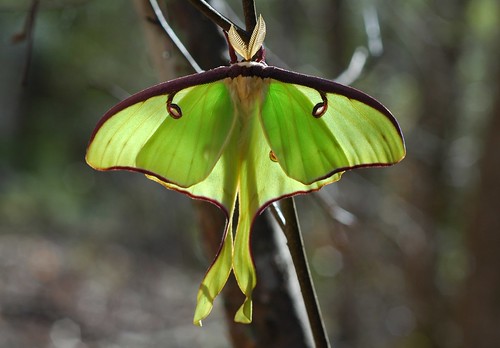 |
| Into each life, some Sweet Gum balls must fall. AMcC |
That's too bad because Sweet Gum, Liquidamber styraciflua, is really the archetype of trees. It's a big, healthy tree, and if utility company tree-trimmers don't come after it, the Sweet Gum will grow into a perfect pyramid. It doesn't have disease problems like crabapples. It won't split up in a storm, like Bradford pears. It doesn't stain your car, sidewalk, and white siding like mulberry; doesn't stink to high heaven like a Gingko. It's not invasive; in fact, it's native to Missouri and the East all the way south to Central America. What's more, according to USDA Forest Service, it won't produce the dreaded "cukoo bir" till it's 20 years old. So, if you're planning on moving within 19 years, go ahead and plant one! If not, be advised that Trees of Missouri, by Settergren and McDermott, records a tree in Tywappity Bottom (now Scott County in southeast Missouri) that was 140 feet tall and 5 feet wide at the trunk.
 |
| Tom Davis managed to capture an image of a winter-plumaged Am. Goldfinch with a Sweet Gum seed in its beak! |
Saint James is the Sweet Gum Capital of Missouri, although even in that fair city, there seems to be some controversy about the "conkleberry."
 |
| Freshly emerged Luna Moth, photo by Sophro |
We have one, a very nice one! But those danged balls are hazardous for walking...if even one is left on my sidewalk, I'll step on it and down I go! Happened more than once, lol!
ReplyDeleteThey can be a menace! Perhaps another common name should be "ankle-breaker."
ReplyDeleteWhere I went to college there was a sweet gum tree that turned colors in the fall from the bottom up, so that at the right time, the top 1/3 was green, the middle 1/3 was yellow and the bottom 1/3 was red. Unfortunately, the tree in our front yard does not do that.
ReplyDeleteMy neighbors' trees are spectacular in fall, mostly red, orange, and purple. I have never noticed which end gets color first, so I'll have to look for that!
ReplyDeleteShe's very patient while I pull the gumballs out of her tail! I do love the trees on most days of the year.
ReplyDelete